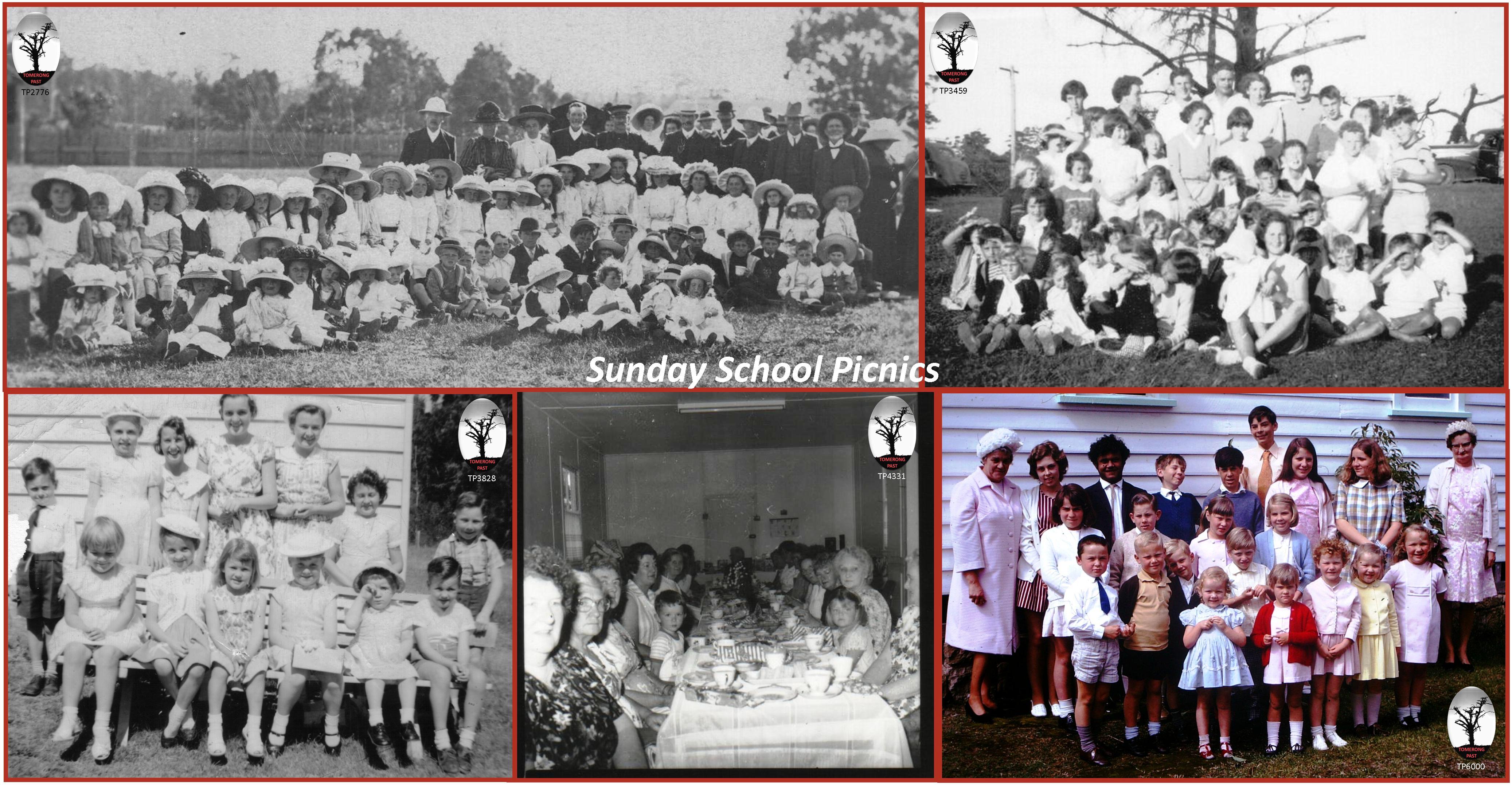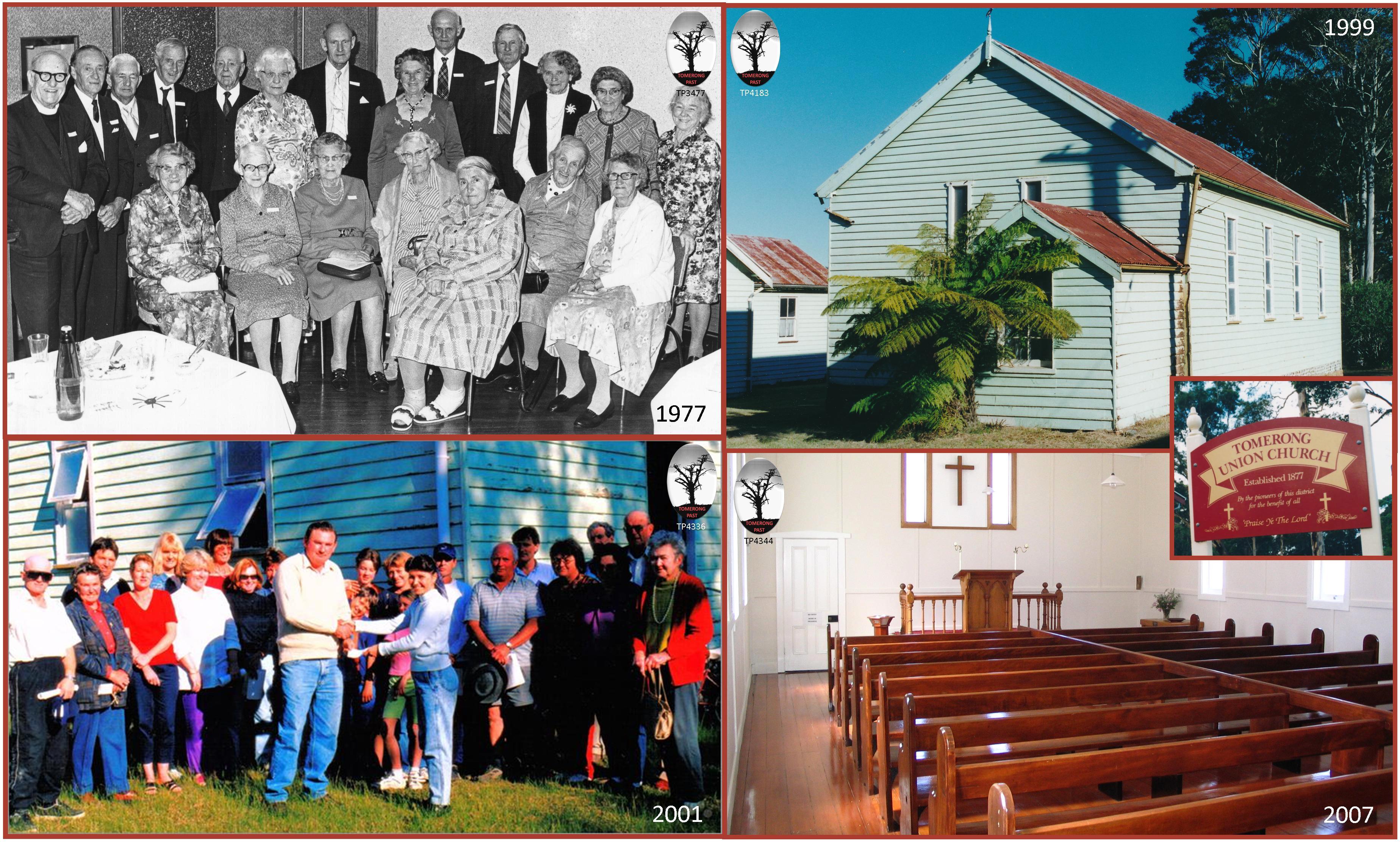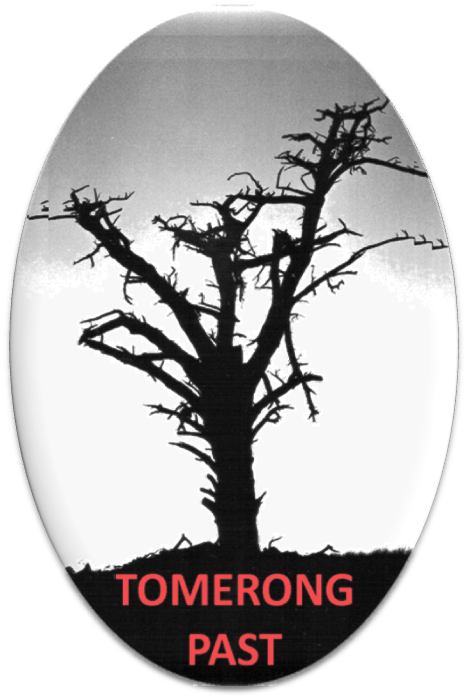EARLY Church services for the sparsely populated and scattered settlements in the Shoalhaven were provided by visiting preachers who would travel from Wollongong and Kiama on foot or on horseback. Because these visits occurred infrequently, lay preachers would also conduct services for the various denominations. As more land was settled, small villages were formed and often the primary concern of the community was the establishment of a place of worship.
The pioneers of the district were of diverse religious backgrounds. Scottish migrants first introduced the Presbyterian faith into the Shoalhaven in the late 1840s and they were quick to establish a Church at Terara. Anglican Church services were held at the home of Mrs Prosper De Mestre of Terara in the 1850s. The first Wesleyan/Methodist Church was constructed at Terara in 1857 whilst the Salvation Army made its appearance in the Shoalhaven in 1884.
Elizabeth (Betsy) Hawken was the wife of Alexander Berry's shipwright, John Hawken. She was a pioneer in the introduction of the Wesleyan (later known as Methodist) faith in the Shoalhaven. With the assistance of Mrs Fanny Caines, she held Wesleyan classes on the Coolangatta Estate in the 1850s and also urged the Minister at Wollongong to visit the Coolangatta community. The Hawken's only son, also John, later settled on land at Tomerong.
Many of the early Tomerong settlers migrated from the United Kingdom and brought with them their Presbyterian, Anglican and Wesleyan influences. As early as 1862 consideration was given to the establishment of a National School at Tomerong. The community wanted a Non-vested School so that 'divine worship' could be permitted within the premises. Religious services were prohibited in schools vested in the Board of National Education at that time. Consequently, Church services were held at the Non-vested school and in 1866 John Parnell permitted Church services to be conducted in his ballroom, situated in a detached building near the Traveller's Rest Hotel.

A Sunday School commenced at the National School under the guidance of Robert Kells, assisted by the schoolmaster Matthew Craig, Mrs Parnell and Alexander Mathie. Church services were still being held at the school in 1871 when the 'Shoalhaven News' advertised a Sons of Temperance service; however, no record exists of the frequency of these services.
Following a successful application to the Council of Education by a local committee, the Tomerong School became a Vested School in 1875. As regulations stated that no such building could be used for public worship unless built and kept in repair without aid from the Council, services were no longer permitted to be held at the school.
By the mid 1870s, an increase in population and consequently the congregation, coupled with the lack of a suitable building, warranted the construction of a permanent place of worship. A committee made up of Malcolm Mathie, Alexander Bryce, Thomas Ganderton, Thomas Crawford, William Bryce, James Watt, John Harriss and others was formed to acquire a site on which to erect a Church. Consideration was given to four sites on properties owned by John Parnell, Mr Thomson, James Barham and one site on Crown Land. James Barham's land was chosen as the site for the new Church on a block south of the Public School. Alexander Bryce, Thomas Ganderton and Thomas Crawford were appointed as trustees of the property.
A correspondent to the 'Kiama Independent' reported on 30 December 1876 '...we have it on good authority that a School of Arts is to be erected next to the school ground, on a piece of land given by Mr J Barham, for which a lease of 99 years is obtained and 50 pounds is to be, or already is, subscribed for that purpose, so that, with the Government donation, will put up a very creditable building. Go ahead Tomerong'. Government grants were available to community groups to encourage the erection of Schools of Art. To qualify for the grant the community decided to erect a building for the dual purpose of a Community Hall and a Church. Donations were called for and a building fund established.
The Church Hall was opened on Thursday 20 September 1877. It was built by William Smith using hardwood weatherboards and a shingle roof. Rev. William Grant (Presbyterian) of Shoalhaven conducted the first service. The occasion attracted a large congregation, many of whom were unable to get inside the building. After the service a tea meeting was held attracting about 30 visitors from various parts of the district. Following tea, a public meeting was held with Mr McArthur occupying the chair. Addresses were given by Rev. James Phillips (Methodist), Rev. Joshua Hargrave (Church of England), and prominent locals: Malcolm Mathie sen., William Bryce, Thomas Ganderton, Alexander Bryce jun. and Alexander Mathie jun. The treasurer's report showed that the building was out of debt. A vote of thanks was given to Mr Barham for the site and Mr Berry for his 'liberal donation'.
The early years were somewhat rocky for the new Church. A little under two years after its opening a dispute erupted between community members and local members of the Good Templars Lodge who held regular meetings at the Church Hall. The incident became known as the 'Tomerong Church Dispute'. The Good Templars' was a fraternal society founded in the United States in 1851, who believed in the principles of total abstinence from all intoxicating liquors, peace and brotherhood.
A letter critical of the manner in which a Good Templars' meeting was held at the Church Hall was published in the 'Shoalhaven News' in May 1879. This letter, submitted by 'our correspondent' initiated a deluge of claims and counter claims, and sometimes bitter accusations, published in the local press for several weeks to follow. Interestingly, the letter stated '…we are a very humdrum sort of people in these isolated parts, and there has really been nothing of interest to communicate, for the capture of some few dozen schnapper of from twenty pounds downwards, or the destruction of half a dozen kangaroos, is such a matter of course, that we don't think it worth recording'. (A retaliatory letter interpreted the word 'humdrum' as a synonym for 'stupid'!)
The letter went on to criticise the Good Templars' songs, 'Mr Malcolm Mathie in his letter to the Shoalhaven News, states:- “The songs were all sacred.” They might have been on that occasion, but if they were sung in that gentleman's usual style, I'll guarantee he could have easily have been heard on the top of Tomerong Hill. The building, I presume, was erected, first as a church for all denominations, and second as a place where meetings could be held for instruction. Whether the latter part of the intention is being carried out I must leave you to judge from the following little selection of the nightly performances of the Good Templars. These are a few of their favourite songs. “That's where you make the mistake”, “I really can't keep still”, “Dark girl dressed in blue”, “Big Sunflower”. Now you will say, well! there's no harm in any of these. Perhaps, not. But at the same time they are hardly the kind of songs suited for a building raised for instructive purposes, moreover the whole proceedings of the Good Templars Society are carried on in such a noisy manner, that I am assured by a gentleman who lives in the neighbourhood that, were it not for the trouble, he would indite them for a nuisance.'
However, letters from Lodge members William Bryce Jun. and James Watt explained that no songs containing 'indecent language' had ever been sung in the Good Templars' Lodge at Tomerong. Mr Watt went on to explain that 'The mission is one of benevolence. We seek to destroy the enemy of our people. It is our duty as Christians to show an example of uniform sobriety, because intemperance abounds among us, and because of its peculiarly ensnaring and dangerous character. Every reflecting and benevolent man laments it as a widespread evil, creating crime, peopling prisons with miscreants, asylums with lunatics and hospitals with incurable invalids. Men of patriotic and Christian benevolence have of late years formed many associations on the principle of abstinence from all intoxicating drinks, which have in many cases been happily successful. The Good Templars Society is one of the largest. The fact and examples which they have accumulated are replete with encouragement to all who rejoice in the progress of sobriety and in the extirpation of a prevalent, infectious and destructive disease.'
A further letter from James Dent critical of the Lodge explains that '...I don't object to the Good Templars singing songs of any kind, or living on milk and water, if they prefer it, but I do object to my being asked to subscribe towards the building of a church and then find that the building is used for such concerts under the name of Christian benevolence, uniform sobriety, etc.'. John Parnell later requested the reimbursement of all money's donated by him stating that he gave his subscription for a Church and not 'a singing saloon'. However, Mr T Ganderton, Secretary of the building committee explained that the subscription list was entitled 'A meeting house, and where public worship may be held.'
On the surface the dispute appears to centre on what some believed was the improper use of the Church Hall, but the crux of the matter was that the community was divided between those who advocated temperance and those who did not. Publication of the dispute came to an abrupt end in July 1879 following the decision of the editor of the 'Shoalhaven News' to charge for space in printing replies to correspondence… (extract from Tomerong Local History)

Back to Top See the More Information page for additional information. The Next Page covers the Clyde Years.


